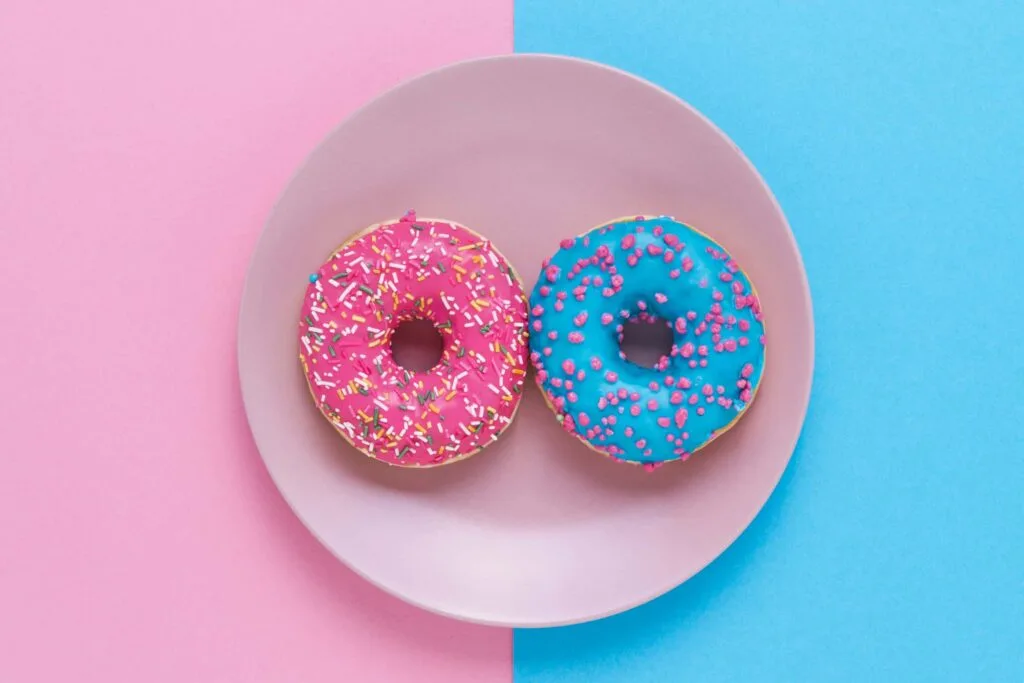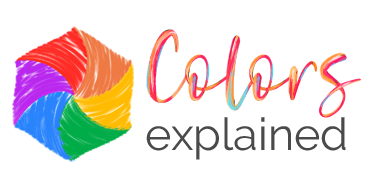Ever wondered where the blue and pink association as gender identifiers came from? In today’s article, we will cover the firmly established stereotype “pink for girls, blue for boys.”
Can you imagine a world where pink and blue were used indistinctively by boys and girls?
Well, not that long ago, that was the western societies’ reality. Not only that, but for a short period, the norm was blue for girls, pink for boys.
Historical and fashion events led to the most significant color divide in the history of humanity and created the gender colors as we know them today.

Gender colors: the blue and pink odyssey
Boy colors, as well as girl colors, are a relatively new concept, as we will talk about below. So sit back and prepare yourself to learn about one of the most mind-blowing facts about color in the contemporary world.
Blue and pink as neutral colors
Before we delve into the meaning of pink, and blue, of course, let’s first talk about a well-spread gender stereotype: pink for girls and blue for boys.
While most western societies consider pink the perfect color for young girls’ toys and clothing, our association of girls with pink remains so strong that it seems as if it has always been like this. However, the blue vs. pink association is relatively new.
In a time way before Barbie and Disney Princesses helped create this deeply rooted stereotype, pink was considered a gender-neutral color, just like white. On top of that, pink was a broadly worn color by the European bourgeoisie in the 18th century.

Both men and women wore blue and pink back then. Not only that, but European aristocrats used to wear powdery colors as a symbol of class and luxury.
For instance, Madame de Pompadour, the chief mistress of Louis XV, was absolutely in love with a powdery shade of pink, so the porcelain manufacturer Sèvres created a charming shade of pink and named it Rose Pompadour.
Regardless, pink was a unisex color. There was no such thing as gender color until somewhere between the late 19th and early 20th centuries.
Yes, you read this right. Pink wasn’t a girl’s color as we know it today.

In a period when it was pink for boys, blue for girls
In fact, it was considered more appropriate for boys because it was considered a sub-color of red, which was regarded as more powerful than blue. At that time, red had a “masculine” implication and association with the military.
Red and white, it turns out, are the colors that make pink when mixed together. It is not a secret that red symbolizes aggressiveness and is used to call people’s attention.
And let’s keep it real: pink resembles red far more than it does white, right.
In many cultures, especially eastern ones nowadays, pink is attributed to men, hence why the normalcy in color gender was pink for boys (and light blue for girls).
And yet, there was no such thing as gender colors until just before WWI.

The rise of “official” gender colors
In June 1918, the trade publication Earnshaw’s Infants’ Department made reference to colors as gender signifiers:
“The generally accepted rule is pink for the boys and blue for the girls. The reason is that pink, being a more decided and stronger color, is more suitable for the boy, while blue, which is more delicate and dainty, is prettier for the girl.”
From that moment on, department stores started recommending gender-specific colors, but there was no unanimity, according to Time magazine.
Some stores would recommend pink for boys and blue for girls, such as Mashall Field’s and Best’s, and others would recommend blue for boys and pink for girls, such as Macy’s and Franklin Simon.
Before this, ALL children essentially wore white and, regardless of gender, wore dresses. White was easy to bleach, and dresses allowed for an easy diaper change.

So when did the pink and blue swap gender happen?
The more recent association of pink with women and femininity started around the early to the mid-20th century.
According to Valerie Steele, director at the Museum at New York’s Fashion Institute of Technology, “men in the western world increasingly wore dark, sober colors,” so the pastel and brighter colors were left to women.
“The feminization of pink really began around there,” she said. “Pink became an expression of delicacy, as well as froth.”
Put that together with the fact pink had won its place in the realm of high fashion, and thanks to branding and marketing postwar, western societies adopted it as a symbol of femininity, establishing a pervasive and deeply rooted “pink for girls, blue for boys” stereotype.
The marketing postwar to which Steele refers started during WWII. That was a critical moment when the German army changed everything, including color conventions and gender colors that would dictate gender identity in design and fashion for the next century at least, says the historian Annmarie Adams.[1]

Just as the German army forced Jewish people to wear a yellow star to identify themselves, they forced gays to wear an inverted pink triangle, which is part of a complex identification system that included criminals and political prisoners.
Since this gruesome moment in history, pink has been thought of as a non-masculine color reserved for girls. Besides, boys have strongly avoided it, leading to a change in the color of clothing, toys, and everything gender-related.
Adams said, “the use of gender-coded décor (especially pink and blue) has been unchanging in children’s bedrooms [since then].”
Regardless of how pink and blue became gender-identifying colors, the meaning of the color pink as we know it today came from this color divide.

The contemporary meaning of pink and blue
The meanings of the colors are ambiguous, instinctual but have also evolved over time and learned from experiences.
So the symbolism of each color relies on people’s sensory experience, emotional connection, and semantic understanding.
That is to say, colors are associated with specific meanings based purely on how we instinctively would react to situations related to the color and how we continue to experience them in the world.
If we were to ask you to imagine the most succulent color, chances are you would pick an earthy shade of orange, brown, or yellow. Not blue.

“Okay, what does this have to do with the meaning of pink?” you may ask.
Well, remember this: our society decides what colors mean and dictates cultural norms.
In western countries, pink is a feminine, sweet, and nurturing color. It is associated with innocence and delicacy but also with frivolity and immaturity.
But we only acquired this perception when the gender color divide happened. “It reinforced the perception of pink as a frivolous color because of its association with women, who have been traditionally looked down upon,” said Steele.
Later in the 1950s and 1960s, pink regained some of its glamour when celebrities attended public events wearing this bold color.

And yet, as JeongMee Yoon, a South Korean artist, points out in her “Pink and Blue Project,” “as girls grow older, their taste for pink changes. Until about 2nd grade, they are very obsessed with the color pink, but around 3rd or 4th grade, they do not obsess with pink as much anymore. Usually, their tastes change to purple. Later, there is another shift. However, the original association with the color code often remains,” which explains why pink is often chosen as one of the least favorite colors for American and British adults.[2]
Pink for girls fighters
Pink is a controversial color that arouses powerful emotions. Many people consider it a statement. Hence why it is often used in awareness and protests.
One of the LGBTQI community symbols, besides the rainbow flag, is the infamous inverted pink triangle used during WWII, which represents self-identity and an international declaration: never again.
In the same breath, pink has also been the color that represents the fight against breast cancer. It also represents equal rights for women, especially in protests.
These events show how pink is again shifting its significance. “Pink is going through a generational shift,” said Steele.

“Society is increasingly moving away from the idea of it as a childish, over-sexualized hue. There’s a shared recognition that pink can be pretty and powerful, feminine and feminist. Men are turning to it, too–as (they did) in the 18th century. We’re re-framing pink.”
In conclusion, when you look at the big picture, the “pink is for girls and blue is for boys” trend is a relatively recent one. In the same breath, it may not be long before the contentious pink- and blue-tinted aisles at clothing and toys’ stores have been replaced by some other shade entirely.
Did you enjoy reading this article about pink and blue? Then share it with a friend or on your social media!
